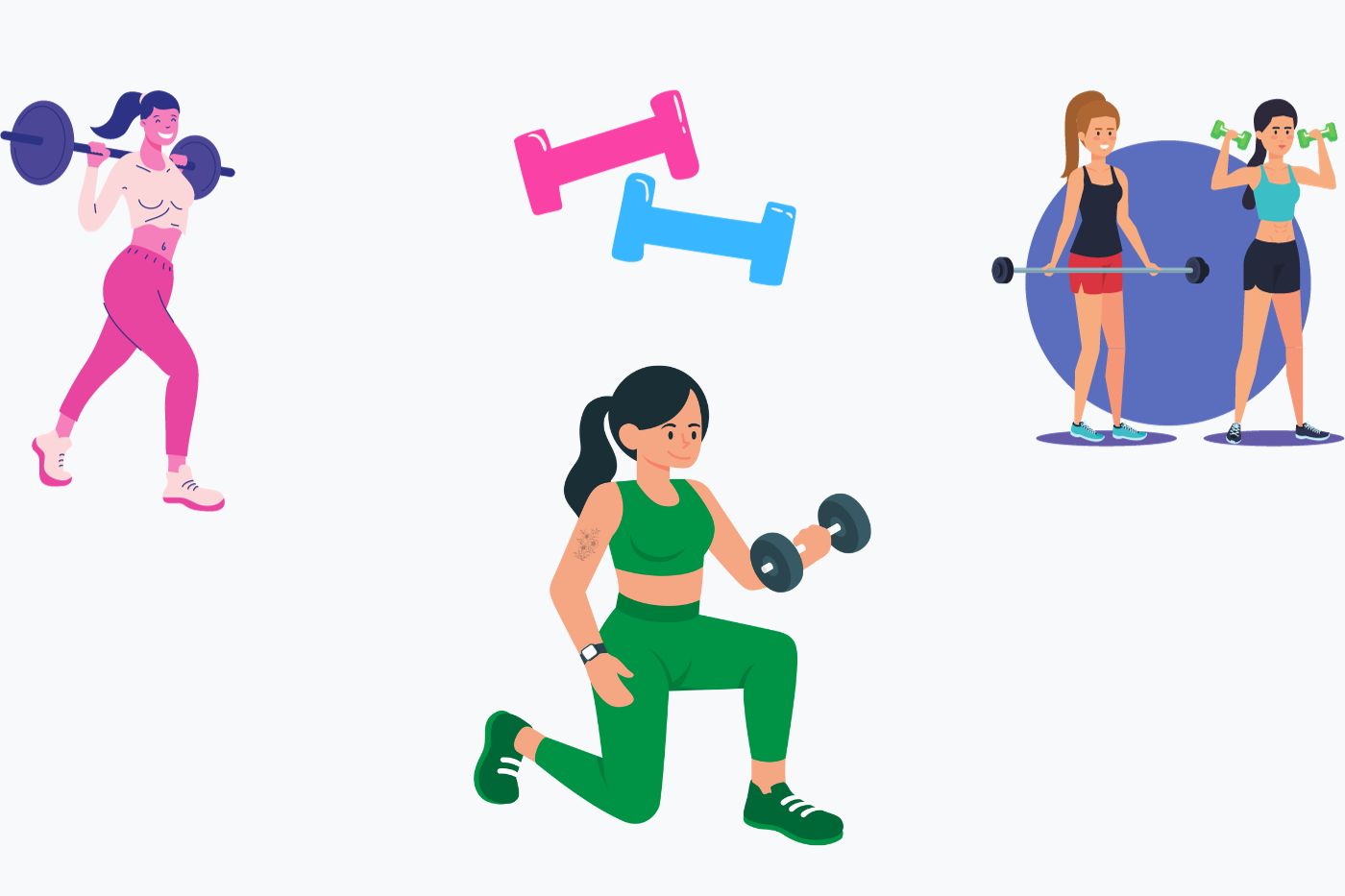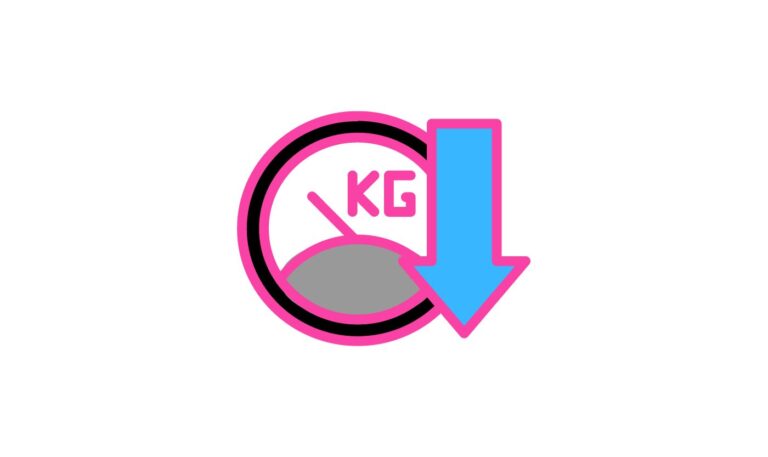Women and Weight Lifting: 5 Great Reasons to Embrace Strength Training
Did you know that only 20% of women lift weights? About 80% miss out on the incredible benefits of weightlifting in their fitness journey and this impacts the quality of their lives.
Today, we will consider the benefits of women and weight lifting – from improved body composition to enhanced bone density and mental empowerment.
We’ll also debunk popular myths, provide amazing tips to get you started on weight-lifting, whether at home or at the gym, and help you get the most out of your weight training!
Let’s get delve right in!
5 Great Benefits of Weight Lifting among Women
1. Improved Body Composition: Get Toned and Burn Fat
Weight-lifting is the ultimate game-changer when it comes to reshaping your body and boosting your confidence. By engaging in regular weight lifting, you’ll build lean muscle while shedding unwanted fat and a more defined and sculpted physique!
But it doesn’t stop there – the magic of muscle lies in its ability to increase your metabolism. As you gain more muscle mass, your body becomes a calorie-burning machine, torching those extra calories even when you’re lounging on the couch.
So, kiss goodbye to those never-ending cardio sessions and embrace the empowering journey of weight-lifting!
2. Stronger Bones: Defend Against Osteoporosis
Picture this: you’re strong not just on the outside, but on the inside too! Weight lifting holds the key to building stronger bones and preventing osteoporosis – a common concern for women as they age.
When you lift weights, you create gentle stress on your bones, triggering them to become denser and more resilient.
No, it won’t make you bulky – that’s just a myth that we will debunk shortly! Weight-lifting is your ticket to rock-solid bones, allowing you to enjoy a vibrant and active lifestyle for years to come.
3. Everyday Strength: Tackle Life’s Challenges
Who said lifting weights is only for gym rats or athletes? It’s for every woman out there who wants to feel capable and strong in her daily life!
Whether it’s carrying heavy grocery bags effortlessly, hoisting your toddler without breaking a sweat, or effortlessly rearranging your furniture, weight lifting equips you with the functional strength to tackle everyday tasks with ease.
So, say hello to newfound strength and bid farewell to feeling helpless in the face of life’s physical challenges.
4. Rev Up Your Metabolism: Burn More Calories
You know that friend who seems to eat anything and everything without gaining a pound? Well, you can be that friend too!
Weight lifting turbocharges your metabolism, enabling your body to burn more calories, even when you’re at rest.
The secret lies in your muscles, as they demand more energy to maintain themselves. More muscles mean a higher basal metabolic rate (BMR), and that’s a golden ticket to easier weight management.
And don’t fret about hormonal havoc – that’s another myth busted! Weight lifting supports healthy hormonal balance, contributing to your overall well-being.
5. Empowerment and Confidence: Embrace Your Strength
Lifting weights isn’t just about what happens in the gym – it’s about how it transforms your mind and heart. The journey of achieving your strength and fitness goals brings an unrivaled sense of empowerment and accomplishment.
It’s an opportunity to enjoy more freedom as you rock in those jeans or a dress! With a well-toned body, you don’t have to fret about choosing the right outfit! Your feminine shape allows you the much-needed confidence.
With that desired body, your confidence skyrockets and you have the courage to handle all the challenges that come to you, which is key to a fulfilling life.
Addressing Major Myths and Misconceptions on Weight Lifting and Women
What have you heard about weight training among women? Is it true, or just a misconception without a scientific basis?
Let’s debunk those myths.
Myth 1: Weight Lifting Makes Women Bulky
Let’s clear up this myth once and for all! Weight lifting does not automatically lead to bulky muscles. Instead, it helps with muscle toning, giving you a firm physique.
Women’s bodies are different from men’s, and they don’t produce as much testosterone, which is responsible for bulky muscle growth. So, you can lift weights without worrying about turning into the Hulk!
In fact, many women who incorporate weight-lifting into their fitness routine achieve a beautifully toned and feminine look that enhances their overall appearance.
Myth 2: Weight Lifting is Dangerous for Joints
Safety first, ladies! Weight lifting is safe and can actually improve joint health when done with proper form and technique.
Taking the time to learn the right way to lift weights reduces the risk of injuries and ensures that your joints are well-supported throughout your workout.
Before lifting the weights, don’t forget to warm up properly. Gentle cardio and dynamic stretches prepare your muscles and joints for the workout ahead.
After your session, cool down with static stretches to keep your joints flexible and healthy.
Myth 3: Weight Lifting is Not Feminine
Let’s redefine what femininity means – it’s about being strong, confident, and empowered! Weight-lifting is for everyone, regardless of gender.
Women can be strong and feminine at the same time, breaking free from outdated stereotypes. Embrace your strength and celebrate the achievements of women who have thrived with weight-lifting.
From Olympic athletes to everyday superheroes, countless women have found joy and empowerment through strength training. So, let’s challenge those stereotypes and embrace the beauty of being a strong and confident woman.
Myth 4: Weight Lifting is Only for the Young and Fit
Age is just a number when it comes to weight-lifting. Don’t let age hold you back from reaping the incredible benefits of strength training. Weight-lifting is suitable for women of all ages and fitness levels.
Whether you’re a young adult or a seasoned senior, weight-lifting can help you improve your overall health, enhance bone density, and slow down aging.
If you are older you should start weight training soonest – your muscle mass is wasting faster and if not well-toned, you’ll struggle with posture, joint pains, and overall strength.
Tips to Get Started with Weight Lifting at Home
Convinced weight-lifting is truly yours and now ready to embark on that journey from the comfort of your own home?
Here are some valuable tips to help you get started and make the most out of your home-based strength training:
1. Assess Your Fitness Level and Set Goals
Before diving into weight lifting, take a moment to assess your current fitness level. Consider any previous injuries or health conditions that may impact your workouts.
Setting clear and achievable goals will keep you motivated and focused throughout your journey. Whether it’s building strength, toning specific areas, or improving overall fitness, having goals in mind will guide your progress.
2. Create a Home Workout Space
Designate a dedicated workout area at home to ensure you have enough space for your exercises. Choose a well-ventilated and clutter-free spot to move freely and safely.
If possible, have a mirror nearby to check your form and posture during exercises. Having a designated workout space will make it easier to stay consistent with your weight-lifting routine.
3. Start with Basic Bodyweight Exercises
If you’re new to weight lifting, bodyweight exercises are an excellent starting point.
Mastering bodyweight movements helps you build a solid foundation before incorporating external weights.
Try exercises like squats, lunges, push-ups, and planks to target different muscle groups and get accustomed to the movements.
4. Gradually Incorporate Resistance Training
As you gain confidence and strength, it’s time to introduce resistance training.
Resistance bands and dumbbells are perfect for home workouts, as they are versatile and take up minimal space.
Start with lighter weights and gradually increase the resistance as you become more comfortable with the exercises.
5. Focus on Proper Form and Technique
One of the most crucial aspects of weight-lifting is maintaining proper form and technique. Proper form not only maximizes the effectiveness of the exercise but also reduces the risk of injury.
If you’re unsure about how to perform certain exercises correctly, consider seeking guidance from online tutorials or fitness professionals.
6. Warm Up and Cool Down
Warming up before your weight-lifting session is essential to prepare your muscles and joints for the workout.
Perform dynamic movements such as arm circles, leg swings, and torso twists to increase blood flow and flexibility.
After your workout, take the time to cool down and stretch to prevent muscle tightness and promote recovery.
7. Stay Consistent and Track Your Progress
Consistency is key to achieving your weight-lifting goals. Set a regular workout schedule and stick to it.
Tracking your progress, whether through a fitness journal or a workout app, allows you to celebrate your successes and identify areas for improvement.
8. Listen to Your Body
Pay attention to how your body feels during and after each workout. If you experience pain or discomfort, take a rest day or modify your exercises to accommodate your body’s needs.
Rest and recovery are vital components of a successful weight-lifting routine.
9. Stay Hydrated and Eat Nutritious Foods
Fueling your body with proper nutrition is essential for supporting your weight-lifting efforts. Stay hydrated and consume a balanced diet rich in protein, healthy fats, and carbohydrates to provide the energy your body needs to perform at its best.
10. Seek Professional Guidance if Needed
If you’re unsure about where to start or need personalized guidance, consider consulting a fitness coach or trainer.
An expert can create a tailored weight-lifting program that aligns with your goals and ensures safe and effective workouts.
Getting Started with Weight Lifting at the Gym: 7 Guidelines for Women
1. Gym Equipment Familiarization:
Before immersing yourself in weight lifting, it’s crucial to familiarize yourself with the gym’s various equipment.
Take a gym tour, and if you’re unsure about how to use a machine or free weights, don’t hesitate to ask for guidance. Feeling comfortable with the equipment will boost your confidence and ensure safe and effective workouts.
2. Warm-Up Session
Never skip the warm-up! Warming up before weightlifting prepares your body for the physical demands of the workout.
Engaging in light cardio, like jogging or cycling, increases blood flow and elevates your heart rate.
Dynamic stretches, such as arm circles and leg swings, enhance flexibility and reduce the risk of injury.
3. Start with Compound Exercises
As a beginner, focus on compound exercises – movements that engage multiple muscle groups simultaneously.
Compound exercises, such as squats, deadlifts, bench presses, and overhead presses, offer numerous benefits. They efficiently build overall strength, boost muscle development, and enhance functional fitness, making them a solid foundation for your weight-lifting journey.
4. Proper Form and Technique
Perfecting your form is critical in weight lifting.
Begin with lighter weights to master the correct technique before adding more resistance. Proper form not only maximizes the effectiveness of the exercise but also minimizes the risk of injury.
Consider seeking guidance from a fitness professional or using mirrors to check your form during workouts.
5. Gradually Increase Weight and Intensity
As your confidence and strength grow, challenge yourself by gradually increasing the weight and intensity of your workouts.
Progressive overload, the principle of gradually increasing resistance, is essential for continuous improvement. Keep your muscles engaged and adapting by adding more weight or performing additional repetitions over time.
6. Include Isolation Exercises
In addition to compound movements, incorporate isolation exercises into your routine.
Isolation exercises target specific muscle groups, allowing you to shape and define your physique. They include
- Bicep curls
- Tricep extensions
- Calf raises
Such and other isolation exercises complement compound movements, offering a well-rounded and comprehensive workout experience.
7. Work with your Trainer
If you’re new to weight-lifting or looking to refine your technique, consider working with a certified fitness trainer.
A trainer can create a personalized weight-lifting program tailored to your goals, fitness level, and any specific concerns you may have. They’ll ensure you perform exercises safely and effectively, making the most of your time at the gym.
8. Rest and Recovery
Embrace the importance of rest and recovery in your weight-lifting journey. Muscles need time to repair and grow stronger after challenging workouts.
Incorporate rest days between weight-lifting sessions targeting the same muscle groups. Adequate rest ensures you’re at your best during subsequent workouts and reduces the risk of overtraining.
Final Tips on Succeeding in Your Weight-Lifting Journey
Whether you are lifting weights at home or hitting the gym a few times in a week, having the right mindset and insights will go a long way in helping you attain your goals.
1. Set Realistic and Specific Goals
Take time to set clear and attainable goals for your weight-lifting journey.
Define what you want to achieve – whether it’s increasing your strength, improving muscle tone, or reaching a certain weightlifting milestone.
Realistic goals provide a sense of direction and purpose, helping you stay focused and motivated.
2. Focus on Form and Technique
Proper form is the foundation of effective weight-lifting and injury prevention.
Invest time in learning the correct techniques for each exercise.
If needed, seek guidance from a qualified fitness professional to ensure you perform movements safely and efficiently.
3. Gradual Progression is Key
Avoid the temptation to rush into heavy lifting from the beginning.
Gradual progression is crucial for building strength and avoiding overexertion. Start with lighter weights, perfect your form, and then gradually increase the resistance as your muscles adapt and grow stronger.
4. Listen to Your Body
Your body knows best, so pay attention to any signs of discomfort or fatigue during weight lifting.
It’s normal to experience muscle soreness after workouts, but severe pain or persistent discomfort could indicate an injury. Rest when needed and allow your muscles time to recover and rebuild.
5. Balance Weight Training with Rest and Recovery
Recovery is just as important as training itself. Adequate rest allows your muscles to repair and grow stronger.
Plan rest days between intense weight-lifting sessions to avoid overtraining and burnout. Consider incorporating other forms of exercise, like yoga or gentle stretching, to promote recovery and flexibility.
6. Diversify Your Workout Routine
Keep your weight-lifting routine engaging and challenging by incorporating a variety of exercises.
Include compound movements, isolation exercises, and functional movements to target different muscle groups and enhance overall strength and mobility.
7. Sustainability for Long-Term Success
Building a sustainable weight-lifting routine is key to long-term success. Find a workout schedule and intensity level that fits your lifestyle and commitments.
Consistency is more valuable than sporadic intense training, so prioritize sustainability in your approach.
8. Patience and Persistence
Weight-lifting is a journey that requires patience and persistence. It takes about three months to start building muscles.
Progress will not be immediate, but with dedication and perseverance, you’ll achieve your goals over time.
So, celebrate every achievement along the way, no matter how small, and use setbacks as opportunities to learn and grow.
9. Nutrition and Hydration
Proper nutrition is essential to support your weight-lifting efforts. Fuel your body with a balanced diet rich in protein, healthy fats, and complex carbohydrates.
Stay hydrated with water before, during, and after workouts to optimize performance and aid in recovery.
Say no processed food or high-sugars including sodas. They will only give you a spike of energy, that’s not enough to carry you through a workout session.
10. Embrace Challenges and Enjoy the Process
Embrace the challenges that come with weight lifting, as they are opportunities for growth and improvement.
Enjoy the process of setting and achieving goals, witnessing your progress, and discovering the strength and resilience within yourself.
Will you Reap the Benefits of Weight Training?
Are you ready to take up the challenge and enjoy the benefits of weight training?
Anyway, as you start your weight-lifting journey, remember that you are unique and your progress will be personal and tailored to you.
So, trust the process, stay committed, and embrace the transformative power of weight-lifting.
With dedication and a detailed approach, you’ll experience the rewards of strength, confidence, and overall well-being on this fulfilling fitness path.





